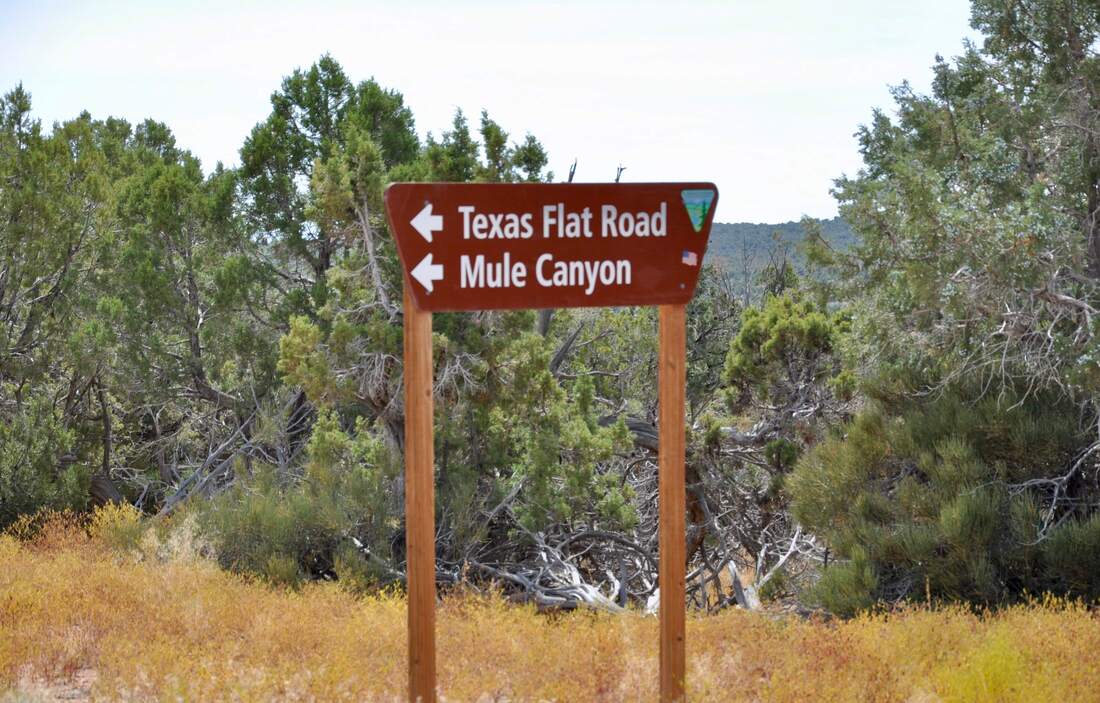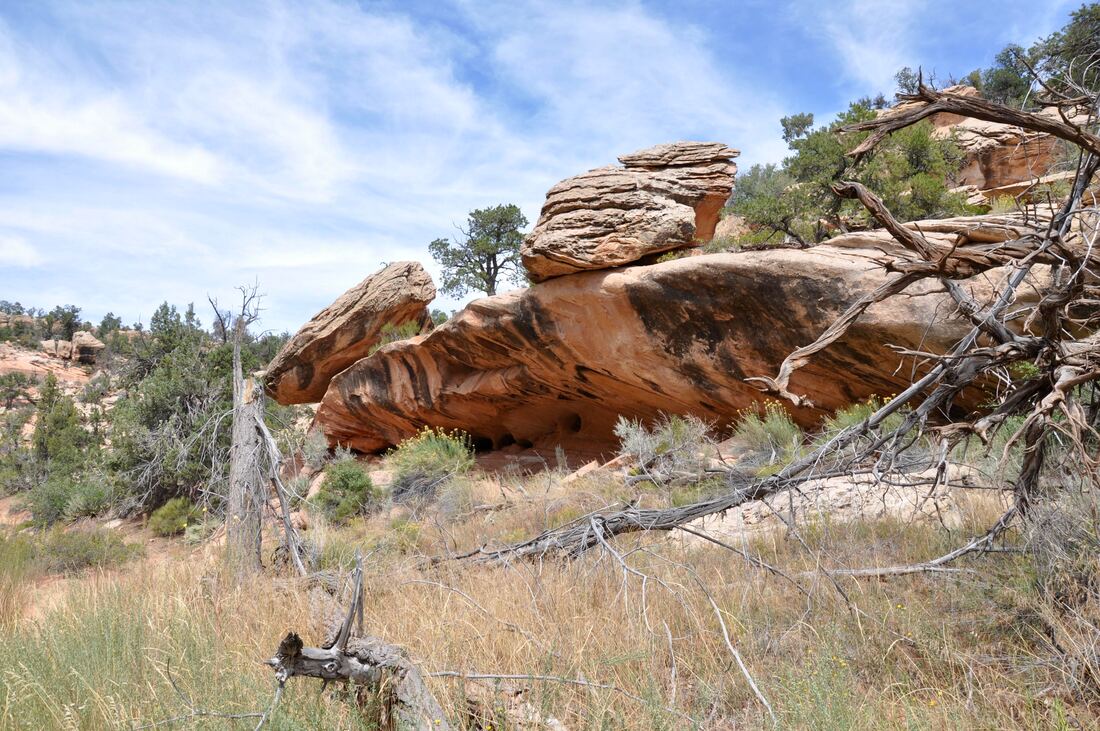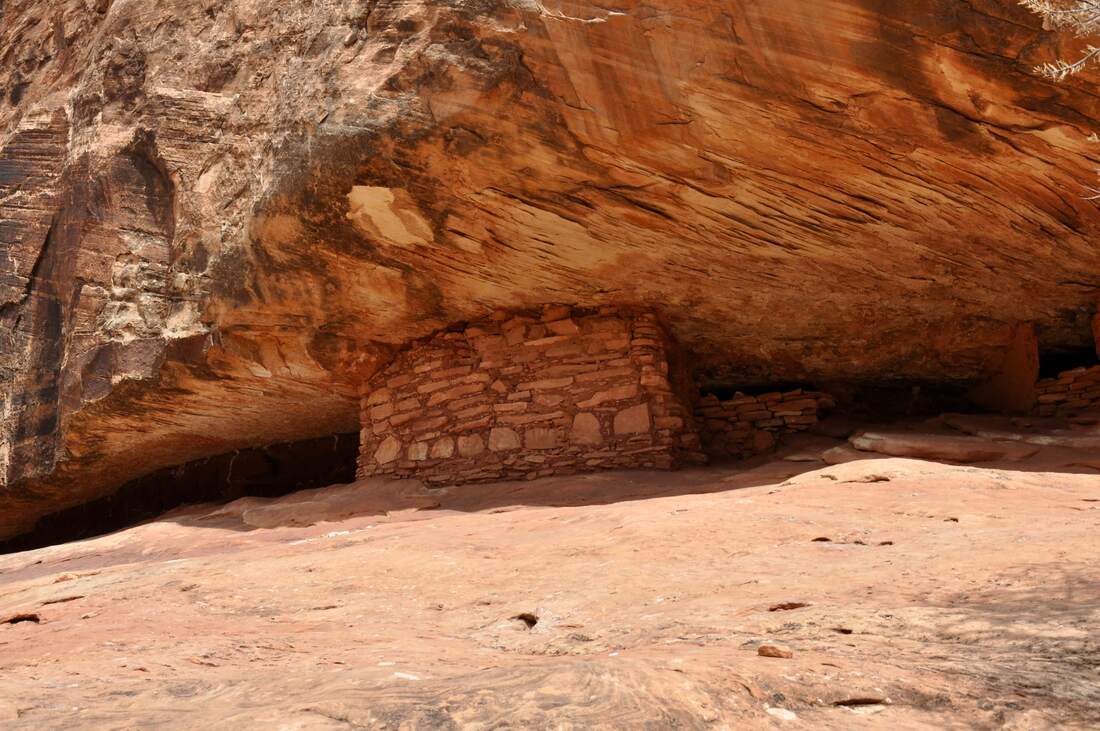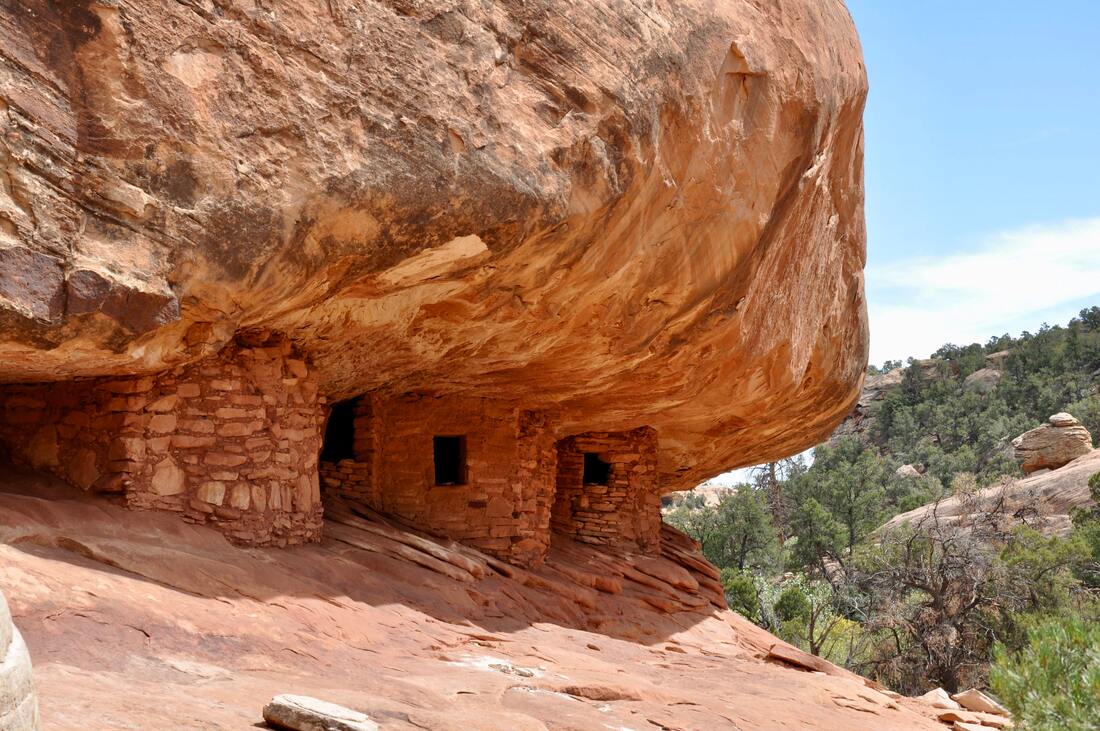|
The House On Fire Pueblo is one of the most famous ancient native heritage destinations in Bears Ears National Monument and the hike to this remote spot is equally as popular. This trail runs through a dry wash creek bed canyon that several ancient civilizations traversed in ancient times and when realizing this, the hiking experience quickly turns into a spiritual journey. The piñon and juniper forest is fairly thin in this high desert area and there are a few cottonwoods that provide welcome shade. Nature is all around and mule deer are sometimes seen, while the little lizards, ravens and songbirds are more commonly encountered. For an archaeologist or anybody interested in Bears Ears heritage, this trail will be like walking through paradise and knowing that the picturesque House On Fire awaits at the end of the line will provide all the inspiration needed for taking this trek on! The dirt access road to the trailhead is easy to spot along Utah Highway 95 near the roadside Mule Canyon Ruins. There is a self serve fee payment box and the cost is only a tiny sum that helps to maintain this park. Signing the permit register is part of the routine, which is both a safety measure and a protective device. From the payment box, the dirt road winds its way through the hills to a canyon that appears to be a bit lusher than the rest. There is no large roadside signage to mark the access point, but there are usually a few cars parked along the road in this area, which confirms this is the right place. After exiting the vehicle, the trailhead information kiosk can be seen near the canyon floor. This is where all the rules and regulations are posted, along with a detailed trail map. If a hiker carries no GPS or pre-printed map, taking a picture of the trail map will help navigation, which can be tricky if this trek is attempted while the winter snow covers the ground. During the hot dry high desert summer, this trail is very easy to traverse, but if rain is in the forecast the hiking experience will be a slick muddy mess. Carrying plenty of water is necessary for any weather conditions, because doing a 3 mile round trip in this arid environment can leave even the heartiest person totally parched. The House On Fire hiking trail is about a 3 mile out and back trek and there are only a few minor obstacles to overcome along the way. The path is well worn, so the trail is easy to follow and getting lost is not much of a concern. Going off-trail is not recommended, because this is a heavily protected archaeological area that contains many undocumented native heritage artifacts that lie in state. Removal or destruction of any artifact is illegal and the penalties are steep, so it is best to just stay on the path. When the House On Fire finally comes in to view, it truly is a fascinating sight to see! This is one of the most photographed ancient sacred places in the entire west and all it takes is one look to see why. The solid sandstone bedrock ledge that this pueblo structure rests upon is shielded by a massive overhang that is well rounded from eons of erosion. The stone block and mortar structures are actually recessed inside the horizontal gap between the ledge and the overhang, so the pueblo was well protected from the elements and it was hidden from plain view as well. This design suggests that this small complex could have served a utilitarian purpose, such as a food storage silo or a hunting shelter, but nobody knows for sure. The word "anasazi" commonly refers to ancient native civilizations that have long since been forgotten or an unknown culture that was established before existing tribal cultures came to be. The Pueblo People, Zuni, Hopi, Navajo and several other tribal nations have heritage ties to the sacred Bears Ears region, and members of these cultures freely admit that there are some ancient pueblos that are so old that the wisdom keepers simply cannot recall who the original inhabitants were. To provide an idea of how far back in time the anasazi occupation timeline goes in Bears Ears, Clovis style spearheads have been found in this region, which sets the date all the way back to somewhere between 8,000 to 10,000 BC. This little tidbit makes it easier to understand what pondering over the mystery of anasazi cultures is all about! The ancient native heritage subject matter certainly is captivating to ponder over while at the House On Fire and the visually experience is intriguing as well. The way the sandstone overhang has been sculpted by erosion, long mineralized streaks appear and the shallow indentations cast just enough light and shadow to create the house on fire visual effect. Ancient native people certainly were keen artists and I am sure that this spot was chosen for a structure because of the appearance of the flames rising to engulf the overhang. For photographers, there are good ways to artistically capture the House On Fire visual effect. Personally, when I do travel article content photography, I simply try to capture images as they appear in real life at the moment I visit, with no artistic interpretation. For this reason my photos of the House On Fire may not be as vivid as others that can be browsed on the internet, but this is what will likely be seen with the naked eye. For those who carry a high quality smart phone camera or for those who use automatic mode for DSLR camera shooting, the jpeg preset landscape function will bring out more color. For those who know how to use manual mode raw file functions on a DSLR camera, warming up the white balance will create the desired effect. Of course, more flaming colors can be revealed with post processing, especially when high dynamic range editing software is used. The House On Fire is as much of a sacred pilgrimage site as it is a unique archaeological discovery. For this reason, it is best to revere this 3 mile round trip hike with the respect it deserves, especially since the original boundaries of Bears Ears National Monument will likely be restored. This National Monument protects over 100,000 ancient archaeological areas that have ties to many modern tribal civilizations and a greater understanding can be achieved during the experience. Be sure to pack plenty of water during the summer months to guarantee the journey remains a pleasant one and by all means, be sure to bring a good camera, so the memories can be shared back home!
0 Comments
Your comment will be posted after it is approved.
Leave a Reply. |
Leave no trace!
New!
Destination West YouTube channel! https://www.youtube.com/@DestinationWestOrg *The Destination West website upgrading project is well underway. Unique YouTube slideshows are replacing the outdated Flickr photo galleries. The new videos feature modern graphics and alternative music instrumentals that enhance the viewing experience. Some articles are being condensed, while others are getting much needed edits. As everybody knows, the bulk of the original articles and photos were published on the fly during the Covid camping venture and there were limitations. Upgrading is the way to go and more articles will receive a makeover each week until this project is completed. After that, I will be able to gather new material. There is light at the end of the tunnel!
JD Lane Archives
July 2024
Donations help the Destinaton West project continue into the future!
Go Fund Me! This website uses marketing and tracking technologies. Opting out of this will opt you out of all cookies, except for those needed to run the website. Note that some products may not work as well without tracking cookies. Opt Out of Cookies |


























